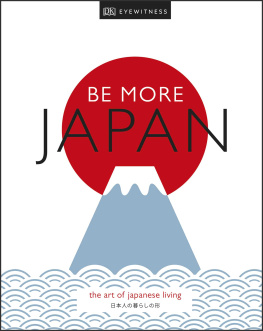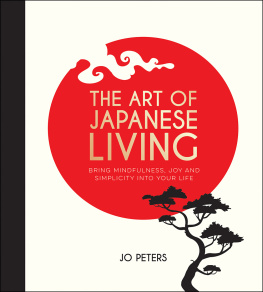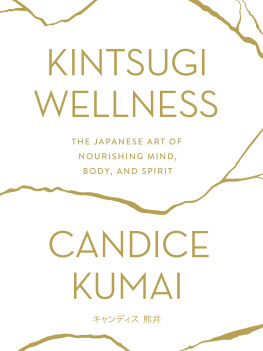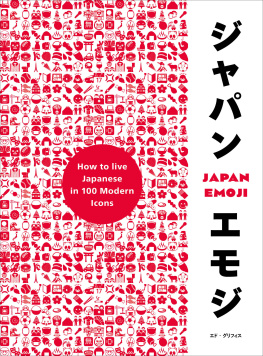Yutaka Yazawa - The Little Book of Japanese Living
Here you can read online Yutaka Yazawa - The Little Book of Japanese Living full text of the book (entire story) in english for free. Download pdf and epub, get meaning, cover and reviews about this ebook. year: 2019, publisher: White Lion Publishing, genre: Religion. Description of the work, (preface) as well as reviews are available. Best literature library LitArk.com created for fans of good reading and offers a wide selection of genres:
Romance novel
Science fiction
Adventure
Detective
Science
History
Home and family
Prose
Art
Politics
Computer
Non-fiction
Religion
Business
Children
Humor
Choose a favorite category and find really read worthwhile books. Enjoy immersion in the world of imagination, feel the emotions of the characters or learn something new for yourself, make an fascinating discovery.

- Book:The Little Book of Japanese Living
- Author:
- Publisher:White Lion Publishing
- Genre:
- Year:2019
- Rating:3 / 5
- Favourites:Add to favourites
- Your mark:
- 60
- 1
- 2
- 3
- 4
- 5
The Little Book of Japanese Living: summary, description and annotation
We offer to read an annotation, description, summary or preface (depends on what the author of the book "The Little Book of Japanese Living" wrote himself). If you haven't found the necessary information about the book — write in the comments, we will try to find it.
The Little Book of Japanese Living — read online for free the complete book (whole text) full work
Below is the text of the book, divided by pages. System saving the place of the last page read, allows you to conveniently read the book "The Little Book of Japanese Living" online for free, without having to search again every time where you left off. Put a bookmark, and you can go to the page where you finished reading at any time.
Font size:
Interval:
Bookmark:
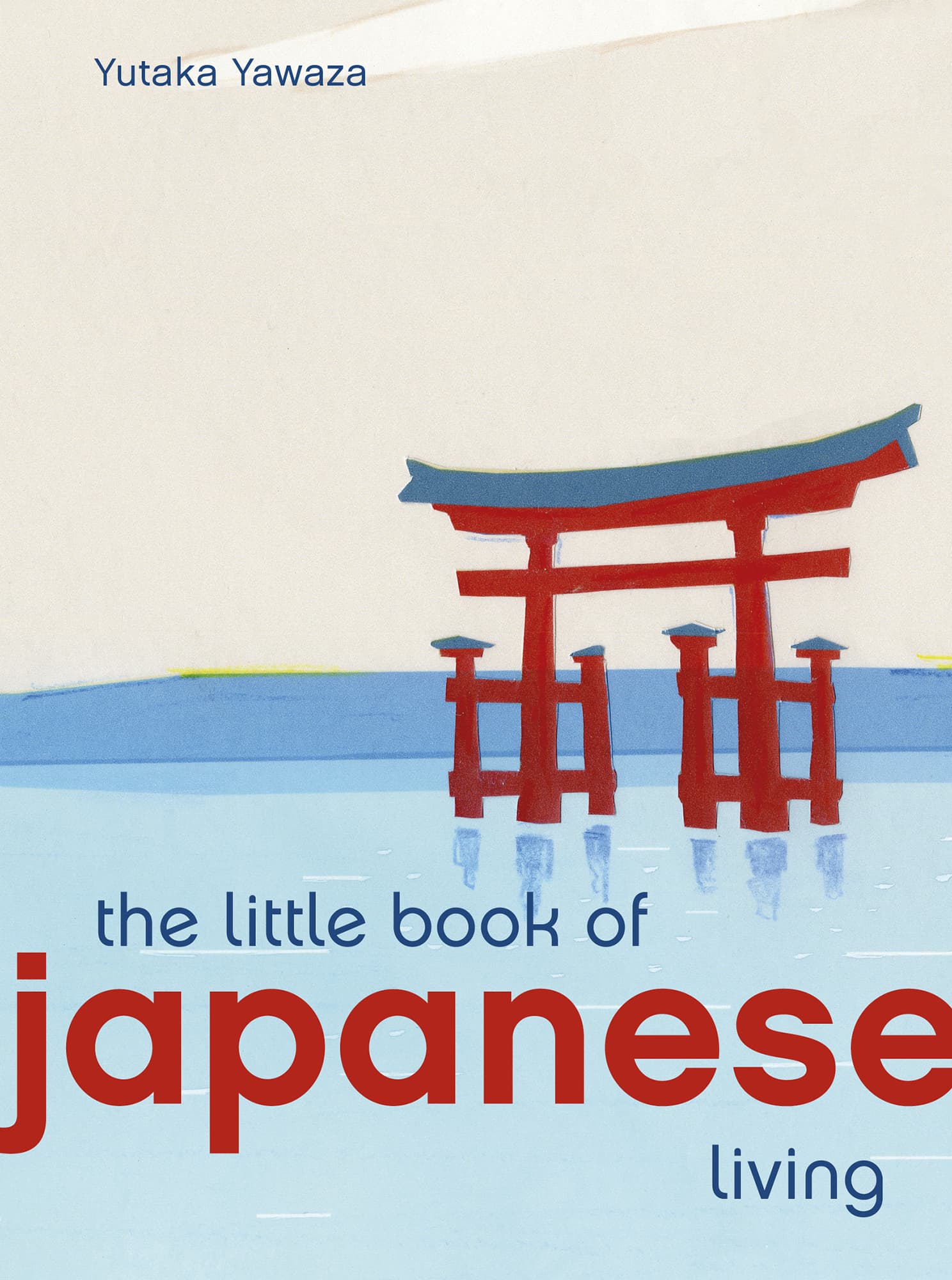
Yutaka Yazawa



Tokyo is an overwhelming place, even for the Japanese. The city itself contains over 13 million people. The commuter region immediately around it is home to almost 44 million. In the era of megacities, Tokyo is the biggest of all. When I come home to Tokyo from overseas, what always strikes me is that nearly all the people are Japanese. It may sound obvious, but the level of diversity one gets accustomed to in other major cities of the world ethnically, culturally, aesthetically is comparatively absent in Tokyo. There is a sense of claustrophobia on a grand scale. And that is the first paradox you encounter in Japan. What appears to be the same can be very different in millions of not so obvious ways. Here, diversity is deep, if subtle.
Of course, Tokyo is only one part of Japan. Over 70 per cent of the country is mountainous, and two-thirds is covered by forest. Nature also makes its presence known through periodic typhoons and earthquakes. The world-famous Shinkansen bullet train shoots across the front of Mount Fuji, one of the many volcanoes which are actively dormant. Despite having some of the worlds most advanced technology, for the Japanese, their environment instils both fear and reverence.
I was born in 1970 on the outskirts of Tokyo, and brought up there until I was 19 years old. As a result, I am naturally partial to Tokyos ways, as opposed to life in the countryside. You may sense elements of superiority in my way of describing the provinces, cities and towns outside Tokyo. You might also feel that I am overcritical in relation to some aspects of Japanese society. I have two answers to that. Firstly, make no mistake: I love my country. However, as Malcolm X said, you should not be so blind with patriotism that you cannot face reality. I have tried to be honest to my own values and sensibilities. In that sense, this is truly personal.
Secondly, I believe that modern Japanese people are, by nature, self-critical. Our country, closed to foreigners, had been ruled by the samurai, who were supposed to be superhumanly brave and strong. But they did not stand a chance against the Europeans, and later on, Americans who forced Japan open. In the shadow of western imperialism, we asked ourselves if we had become good enough to stand on our own.
You may find other partiality of which I am not as aware as those mentioned above. I thank you in advance for accepting them as my personal shortcomings, and hope that you find what follows nevertheless informative.


Kant is the area around Tokyo (), made up of seven prefectures: Tokyo, Kanagawa, Chiba, Saitama, Gunma, Tochigi and Ibaraki. From the old capital of Kyoto, it was the eastern frontier land, with the name Kant meaning east of the gate. It was also sometimes called Band, meaning east of the slope, as travellers from Kyoto saw the huge marshy plain emerging in front of them as they descended from the central mountainous region.
The samurai thrived in Kant. When the first shogunate government was established in the 12th century, it chose the city of Kamakura, in present-day Kanagawa prefecture, as its capital. Thus started an age-long rivalry between east and west in Japan. In response to Kant or Band, people gave the name Kansai () to the area around Kyoto (and later Osaka), meaning west of the gate. To this day, the difference in culture and dialects between the two areas are often highlighted, rather than ignored. Even in the highly homogenised Japanese society of today, Kansai people tend to stick to their native accents when speaking among themselves.
I am Kant-born, and spent little time outside the region until adulthood. I married a woman from Kansai, and must admit that I panicked a little when I first heard her speaking with her friends from Kansai in their native accents.
The differences extend to food. Sushi, tempura and soba noodles originated from Edo, and are regarded as Kant foods. Kansai people say that Kant foods are too salty, while Kant people complain that Kansai foods are bland.

When a city has been the capital for a millennium, even with inevitable ups and downs along the way, it cannot help but grow a character. Kyoto is definitely a character.
Kyoto, or Heian-ky as it was called at the time, was established as a capital city in 794 by Emperor Kanmu, who wanted to break free from the established courtiers and religious powers based around the ancient capital of Nara (). The deciding factor for the choice of real estate was the Chinese art of feng shui, which advised that a city must have mountains to the north, a river to the east, a lake to the south and major roads to the west. In reality, the main factor was the abundant supply of fresh water provided by the mountains surrounding Kyoto to the north, east and west. One of Kyotos major tourist attractions to this day is the majestic Kiyomizu-dera (), a temple perched on the cliff to the east of the city. Kiyomizu literally means fresh water.
As the seat of central government and the emperor, Kyoto saw many wars and conflicts. It was also a commercial centre while most of Japan remained agricultural. As a result, Kyoto people have gained a reputation for siding with the powerful and changing sides for the purpose of their own survival. They are also said to be status conscious, never speaking their own minds and the masters of condescension.
Without their conservative values and cunning, however, we would have lost Kyotos old-fashioned charm. Its more than just ancient architecture it is the citys entire atmosphere. The people of Kyoto have protected it against relentless and violent winds of change brought from outside. We owe much to, and have a lot to thank for, Kyotos character.

Osaka is located at the end of Seto Naikai (), Japans extensive inland sea, at the mouth of a river that connects it to Kyoto. It became a major city in the 15th century with the building of an important temple for Jdo Buddhism, or Pure Land Buddhism. The temple flourished not only with the devotion of its followers, but also with the improvements it provided to the city and its port facilities.
During the Tokugawa shogunate between the 17th and 19th centuries, Osaka came under its direct control and developed into a commercial hub. As feudal lords known as daimy ( ) levied taxes on rice production, a large part of Japans rice harvest found its way to Osaka to be converted into currency. Each feudal lord kept warehouses in Osaka, so local merchants flourished from the trade. Whilst the shogun ruled over Japan from Edo, Osakas merchants dominated the marketplace and held the purse strings of the samurai.
Font size:
Interval:
Bookmark:
Similar books «The Little Book of Japanese Living»
Look at similar books to The Little Book of Japanese Living. We have selected literature similar in name and meaning in the hope of providing readers with more options to find new, interesting, not yet read works.
Discussion, reviews of the book The Little Book of Japanese Living and just readers' own opinions. Leave your comments, write what you think about the work, its meaning or the main characters. Specify what exactly you liked and what you didn't like, and why you think so.


![Kozue Yazawa [矢澤こずえ] - Blue & White Embroidery: Elegant Projects Using Classic Motifs and Colors](/uploads/posts/book/319389/thumbs/kozue-yazawa-blue-white.jpg)
